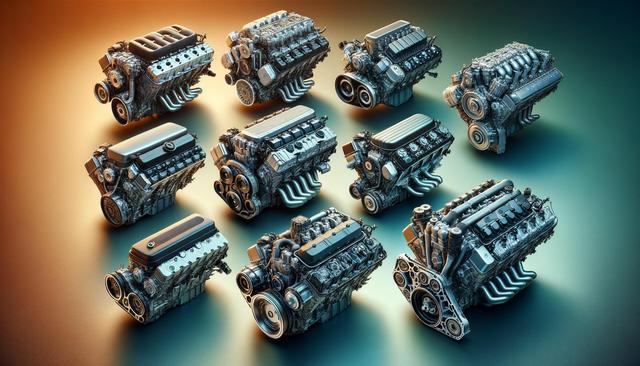Understanding the Appeal of Low Mileage Used Engines
Low mileage used engines offer a practical solution for vehicle owners looking to extend the life of their car without the high cost of a brand-new engine. These engines have typically been driven less and, as a result, may experience less wear and tear compared to high-mileage alternatives. This can translate into better performance, greater reliability, and lower maintenance costs over time.
Drivers often turn to low mileage engines when their current engine fails or begins to underperform. Instead of investing in an expensive new vehicle, replacing the engine alone can restore functionality at a fraction of the cost. This is especially useful for older or beloved cars where a full replacement may not be financially justified but the car still holds value to the owner.
Key reasons for choosing a low mileage used engine include:
- Cost savings on parts and labor
- Extended vehicle life
- Reduced environmental impact through reuse
- Comparable reliability to new engines when properly sourced
When sourced from reputable suppliers, low mileage used engines often come with inspection records and limited warranties, adding peace of mind to the purchase.
How Mileage Impacts Engine Performance
Mileage is one of the most significant indicators of an engine’s condition. Engines with lower mileage typically have less internal component wear, which contributes to better performance and efficiency. Fewer miles often mean less exposure to heat cycles, friction, and contaminants that degrade engine parts over time.
For example, an engine with under 60,000 miles may still have a significant portion of its original lifespan available, especially if it was maintained according to manufacturer guidelines. This makes it a reliable choice for vehicle owners seeking a balance between cost and performance.
However, mileage alone should not be the only factor considered. Additional factors include:
- Maintenance history
- Storage conditions
- Vehicle usage type (e.g., city vs. highway driving)
- Signs of previous damage or overheating
Combining these aspects with low mileage ensures a more comprehensive assessment of the engine’s health and potential longevity.
Where to Find Quality Low Mileage Engines
Finding a trustworthy source is crucial when purchasing a used engine. Many buyers turn to auto recyclers, salvage yards, or specialized engine resellers who focus on sourcing and inspecting engines from vehicles that were either totaled with minimal engine damage or retired early due to non-engine related issues.
These providers often catalog engines based on mileage, make, model, and condition, making it easier for buyers to match the right engine to their vehicle. Some even offer online search platforms with detailed descriptions and photos, simplifying the selection process.
When sourcing a low mileage engine, consider the following tips:
- Request a vehicle history report to verify mileage
- Ask about warranty options and return policies
- Ensure compatibility with your vehicle’s make and model
- Confirm that the engine has been tested or inspected
Doing due diligence upfront can prevent costly surprises and ensure a smooth installation process.
Installation Considerations and Costs
Installing a low mileage used engine can be a complex process, typically requiring the expertise of a certified mechanic. While the engine itself may be affordable, labor costs, additional parts, and time should be factored into the overall investment.
Installation costs depend on several variables, including the type of vehicle, engine placement, and the engine’s condition. Some engines may need minor adjustments or replacements of parts such as gaskets, belts, or sensors to ensure optimal performance once installed.
Here are a few factors that can influence installation costs:
- Vehicle make and model (some have more complex engine bays)
- Availability of engine-specific parts
- Condition of existing vehicle components
- Labor rates in your region
Despite these considerations, installing a used engine is often significantly more cost-effective than purchasing a new engine or replacing the entire vehicle. Partnering with a knowledgeable mechanic ensures the job is done right and reduces the risk of complications down the line.
Tips for Maximizing the Lifespan of a Used Engine
Once a low mileage used engine is installed, proper maintenance is key to ensuring it performs reliably for years to come. Regular oil changes, timely filter replacements, and attention to warning signs can go a long way in preserving its condition.
To get the most out of your used engine, follow these maintenance practices:
- Use manufacturer-recommended fluids and parts
- Keep up with scheduled tune-ups and inspections
- Monitor for leaks or unusual noises
- Drive responsibly to minimize unnecessary engine strain
In addition, maintain documentation of all work done on the engine. This can be helpful for resale value and for troubleshooting if issues arise. A well-maintained used engine can often perform just as reliably as a newer one, offering great value for the investment.
By taking proactive steps and staying informed, vehicle owners can enjoy the benefits of a low mileage used engine without compromising on performance or longevity.







